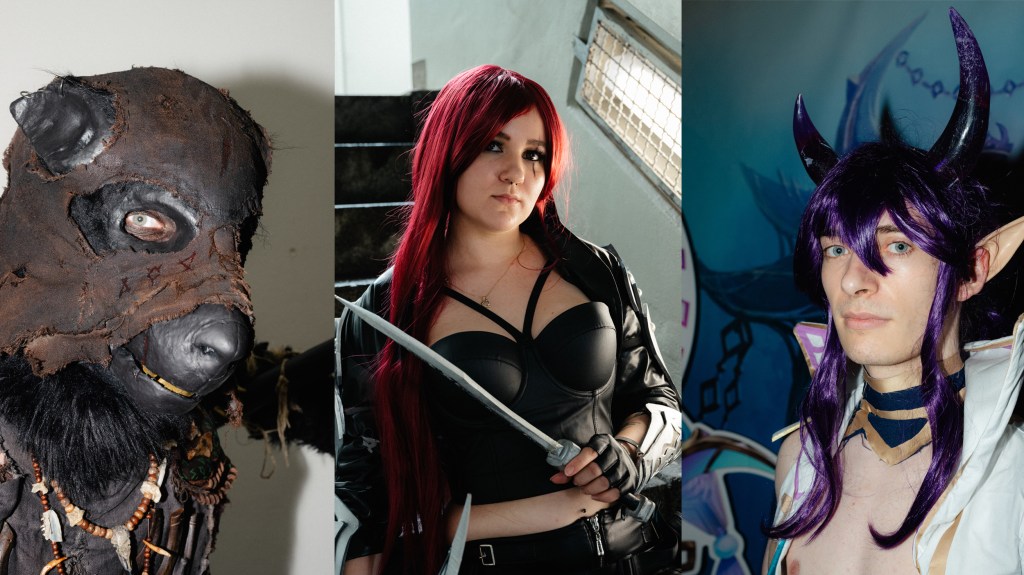At last week’s MTV VMAs, it seemed like 2016 was the year of Beyoncé, as the pop icon walked away with eight awards for her efforts on Lemonade, a 12-track musically-diverse “visual album,” an artform recognized by the new VMA category “Best Breakthrough Long Form Video,” which the songstress won, as well. In reviving the VMAs “best long form video” award—given out once in 1991—Jesse Ignjatovic, an executive producer for the annual show, told MTV News that, “it just seemed that this year [long-form video] was something that was proliferating the music landscape more than the past,” and that the VMAs were indeed “always trying to stay on the cusp and reflect culture and what artists are doing.”
Yet, many have seen long-form music videos surge and resurge throughout the years, making the artform just as indicative of the time period as the artists behind it.
Videos by VICE
“People have been doing long-form music videos for quite some time,” says Alan Cross, longtime radio broadcaster and music guru. “We can go back to the days of The Beatles and look at the films they did for things like Magical Mystery Tour, which really was a long-form music video long before there were such things as music videos traditionally. I think it’s something that we see every once and awhile when people have the funding and support to be able to put together a long piece of audio and visual art.”

A scene from The Odyssey. Image courtesy of Park Pictures
Cross makes a fair point. With the budget for Lemonade sitting at an estimated $1.35 million—compared, for example, to the $500,000 Michael Jackson spent on the 13-minute-long “Thriller” in 1983—a record label probably needs a lot of convincing to shell out that kind of dough, especially when investment in just two or three music videos is likely to yield the same returns in sales. Distribution becomes another issue entirely.
“It’s not like you can go to MTV or any of the other channels that play this sort of stuff,” says Cross. “They don’t really do that anymore, so you have to go to places like YouTube or other online sources. We also don’t see things like Roger Waters’ The Wall because recording studios that support that sort of thing have dropped dramatically. It’s not that it can’t be done, it’s just that things are evolving.”
While Lemonade did screen on HBO with a total runtime of 46 minutes, the payoff for lesser-known artists in creating what’s essentially a short film may not be there. But with film festivals like Cannes now boasting music video categories, long-form audio and visual pieces seem to break away from the industry’s use of a music video as a sales tool, instead becoming a vehicle for immersive storytelling.

Florence Welch and Vincent Haycock on the set of The Odyssey, the short film nominated for the VMAs ‘best breakthrough long form video. Image: Emma Holley
“If you have an artist that is a good storyteller, or you have a director that has an eye for using music and visuals to tell a long form story, well then you’re almost making a musical,” says Cross. “Maybe what we’re seeing on some level is the evolution of the musical, much like what we saw with movies based on Broadway productions.”
Mamma Mia!, We Will Rock You, and American Idiot are but a few of the many instances when a theatrical production creates a visual narrative through a musician’s album or discography. For Vincent Haycock, director of Florence & The Machine’s The Odyssey—which was nominated for the VMAs’ Long Form category—finding thematic and visual consistency between songs was key.
“We were thinking along the lines of live theater,” Haycock tells The Creators Project. “But when the label came back saying that they still needed singles for each song, we had to work backwards from our big ideas and calumniate them down. We kind of treated it like a really open artform at that point, which is so rare. Our goal was to create this theatrical expressionistic piece.”

On The Odyssey set. Image: Emma Holley
Haycock has been working with music videos for ten years, having directed for the likes of Calvin Harris and Lana Del Rey. Even though he’s seen the budgets for music videos increase throughout the years—Apple now supplying production costs—when it comes to long-form, it remains as an artistic endeavor more than business opportunity.
“One of the reasons why I’m so skeptical about it [long-form music video] is that it’s nearly impossible to get made,” says Haycock. “The amount of fighting we had to do to get the funds and the amount of effort that it took on Florence’s part to stand up for the project, I don’t know if I’ll ever be able to do this again.”

On The Odyssey set. Image: Emma Holley
Though it seems unlikely that ‘visual albums’ will become the new norm in the music industry, their rise spells a new aeon for the industry. What they justify, above all, is the field’s attraction for new filmmakers who become inspired with the pure emotional motivations behind a song.
“I think it’s a natural progression for my generation of filmmakers that want to become filmmakers,” he says. “Doing music videos is just a good way into filmmaking. If you find a song that you can connect with where you can make images and put them together it can be really powerful. The same way a movie has a good soundtrack or score to a scene. I don’t see it much different from making a feature film, it’s just a shorter format.”
What are your favorite long-form music videos? Let us know on Twitter or in the comments below!
Related:
‘The Revenant’ Official Music Video Is All-Natural [Premiere]
Tour Solomon’s Temple in Young Magic’s New 3D Musical Environment [Premiere]



